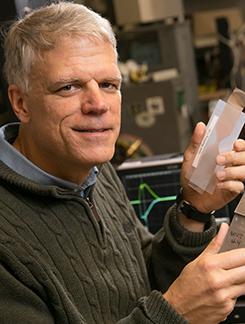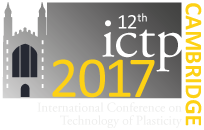 Glenn Daehn is the Mars G. Fontana Professor of Metallurgical Engineering at The Ohio State University. His roots in the US Midwest led him to work on the development of technologies and workforce needed of cleaner and more agile manufacturing processes so regions can be largely self-sufficient and locally manufacture what they need - with high quality with minimum waste.
Glenn Daehn is the Mars G. Fontana Professor of Metallurgical Engineering at The Ohio State University. His roots in the US Midwest led him to work on the development of technologies and workforce needed of cleaner and more agile manufacturing processes so regions can be largely self-sufficient and locally manufacture what they need - with high quality with minimum waste.
He is leading technical and workforce projects in the Manufacturing USA Lightweight Innovations for Tomorrow (LIFT) Institute and is on the Leadership Council of MForsight, which provides manufacturing policy support to the US government. He holds a B.S. from Northwestern University and M.S. and Ph.D.degrees from Stanford University.
Abstract: Impulse Manufacturing: Why and How
Metal forming has traditionally been carried out with very large tools on even larger presses that move relatively slowly, so that metal that being shaped is in static equilibrium. There are a number of old and emerging methods that use very short-duration impulses to form metal. Short times and high speeds can enable new and useful behaviors from the metal while being worked into a component: formability can be improved, adiabatic shearing can facilitate cutting shapes, high speed collision can produce solid state welds and residual stresses can be locked in to produce very strong mechanical joints. The use of explosives and electromagnetic induction and repulsion (electromagnetic forming) have been widely published since the 1960’s. This presentation will focus on two new methods that generate an expanding hot gas/plasma using laser ablation and the vaporization of a rapidly joule heated metal foil. These methods can generate enormous local pressure that can be used for forming, cutting and solid-state welding.
This presentation will detail our understanding of of the science and phenomenology of these techniques, describe appropriate diagnostic methods, show demonstrations of practical problems that can be solved with these methods, focusing on examples and simulation of impact welding, and conclude with a discussion of commercialization status and challenges.
